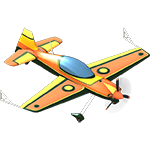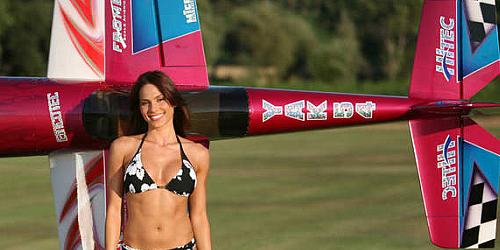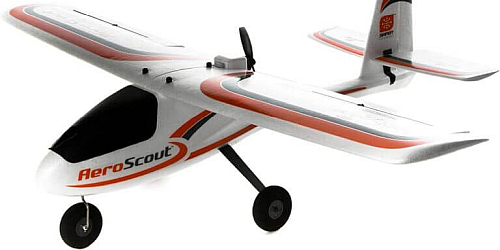Gas RC Airplanes – Introduction to gas model airplanes
nitro radio controlled planes
nitro radio control planes
nitro remote control planes
rc gasoline planes
remote controlled gas planes
Gas RC airplanes are a little more complicated than electric planes but are much more enjoyable to fly. Gas model airplanes are great because they fly faster and longer than electric planes.
Also, the prices have dropped considerably, and have become much easier to fly. If you need help fixing your gas-powered RC airplane, visit my help section.
Note: Gas-powered RC airplanes do require a nitro methane-based fuel and they can be very difficult to operate and maintain. If you are not up to the challenge, I recommend you start off with an electric R/C airplane first, then progress to a fuel-powered one.
First off, if you are a beginner, I recommend you get a gas RC trainer airplane. They are a perfect introduction to gas RC planes. If you have some experience, or just choose not to get a trainer for your first plane, then you should take a look at our gas RC airplanes.
[iframe width=”900″ height=”600″ src=”https://www.youtube.com/embed/QnBLZvt9VdA” title=”YouTube video player” frameborder=”0″]
Gas or Glow?
Let’s start with definitions:
Gas engine
Internal combustion engine with spark plugs & ignition system that typically burns regular gasoline with a mixture of oil.
Today’s RC gas engines are quite powerful, economical, and reliable. Many were originally used in chain saws making parts easily available “Off the Shelf”. The downside is the ignition system & a larger battery pack adds weight and used in larger airframes.
Over the years, a shift towards larger models has made gas-powered aircraft very popular and spurred the growth and refinement of gas-burning engines to replace the large displacement glow engines.
Points to bear in mind:
Just Starting out?
- Compared to electric-powered trainers, gas-powered trainers are more difficult to really master. The addition of learning how to set up, start, manage fuel, glow plugs or an ignition system in itself can be daunting without help.
- Consider joining a local model flying club or find another RC flyer that is willing to teach you to fly – you’ll get a great out of it, make good friends with years of experience to draw from, and share your enthusiasm with others that can relate to your passion.You may need items and accessories to complete your model; often, the local club can lend these items, so you do not have to purchase everything at once just to get started.It is always best to find expert help, going it alone very often will result in a destroyed model and a great deal of disappointment. It is very easy for a novice to spend a great deal of time & money only to overlook a detail or make a mistake that can end the model.
- If you can’t find help, gas RC airplane trainers are typically high-wing design with noticeable dihedral, usually around the ’40’ or ’46’ size two-stroke glow plug engine with a wingspan of around 60 inches
- Nitro RC airplanes are often restricted to a club model flying field or a private field (with permission) large enough to accommodate your plane. Only electric RC airplanes are acceptable at the local park.
- Gas RC airplanes require more equipment out on the field because of the engine. And are not as simple as an electric airplane and requires a great deal more maintenance.
Important Gas RC Airplane Reminders
If you are a beginner, picking out the right gas RC plane is very important. You don’t want to waste time and money on the wrong airplane. If you are just starting out, then you need a gas RC trainer airplane.
Before buying your gas RC plane, you need to keep these things in mind….
- it should be a trainer gas RC plane if you are a beginner
- wings should be high up on the fuselage above the cabin area
- if a beginner, the wing should be large because more lift is created, which will make the airplane fly slower
- it needs tricycle landing gear to make landings easier
- flat bottom wing airfoil section for better lift
- get 4 to 6 channel transmitter so you don’t have to buy a new transmitter when you have a more advanced gas RC airplane in the future
- bigger the plane, the easier to fly
Below is a list of equipment that the beginner would need to start flying, and maintain, their gas RC airplane.
Don’t worry, usually, everything below is already included with your purchase. Just go through the list to make sure you get it all.
- gas RC plane (RTF, ARF, Kit)
- 2-stroke or 4-stroke engine
- quart of RC airplane hobby fuel – 15% Nitro preferably
- “after run” gas RC plane engine oil
- fuel pump
- starter for the engine
- ignition system (spark plug, glow plug, etc.)
- radio control transmitter & batteries – 4 to 6 channels
Just a reminder, always look for the words “not included”. It will save you frustration in the future. Check out the parts and accessory sections to get those needed items.
Why Choose Gas RC Airplanes?
There are many ups and downs to gas RC planes. Let’s look at them now.
Gas RC Airplane Pro’s
- Long flying times
- Airplane looks and sounds more authentic
- Increased speed and torque
Gas RC Airplane Con’s
- Noisier
- Higher Cost
- More maintenance expenses
- Challenging for beginners
- Longer setup time
- Requires some knowledge of RC airplanes to set up
I know it doesn’t look like it, but the pro’s outweigh the con’s. Simply because long flying times and increased speed are major advantages.
Especially compared to electric RC airplanes, which usually have a flying time between 10 and 20 minutes, and slower speeds.
Gas RC Airplane Engines
Gas RC plane engines, also known as nitro engines, work great for powering your airplane. They make your airplane a true airplane. The best benefit of nitro-powered engines is you are allowed more freedom to experiment and enhance your plane. That’s where the greatest fun is! I can also help you with nitro engine tuning and maintenance.
Glow or Nitro engines
There Are different terms for the exact same thing and represent the majority of models at the local flying field, although electric planes’ popularity is rapidly catching up with glow-powered planes.
Usually less expensive, more powerful, lighter, simple and cause less radio interference from ignition sources. But, glow fuel costs up to 10 times more than gasoline and a glow engine burns a lot of it, almost 2 1/2 times more than a gasoline engine.
It has never been easier to get into flying nitro RC airplanes with so many RTF trainers on the market, you no longer have to spend weeks building a kit first. Although some of us still do enjoy the building process as much as flying.
Gas or Glow? Which to choose? As a general rule consider a gas engine for larger planes.
What else will you need?
When you purchase a trainer gas RC airplane, everything you need is usually included. For any other type of nitro-powered airplane you purchase, always check for the required accessories that are not included.
Most of the time it will just be the engine and/or some extra needed accessories (i.e. fuel, oil, etc.) that are not included. You can purchase those items at the same store you purchase your airplane from.
Best Gas RC Trainer Airplanes
Gas RC trainer airplanes are a must for the beginner who is just starting out with a gas-powered airplane. Most gas trainers are equipped with a high wing design and a large dihedral in the back. Gas trainers are ideal for the beginner because it has a size 40 engine (.40 cubic inch engine) and a 3 channel radio system that can be upgraded to a 4 channel when the time is right.
Gas RC trainer planes come either ready to fly or almost ready to fly. Of course, the beginner should consider the RTF model, but if you would like to assemble it and be able to make your own choices on the aircraft’s engine, design, and more, then you should go with an ARF.
An almost ready-to-fly airplane usually requires you to purchase the engine and a few other vital parts that are not included. Just be sure to purchase the recommended or supported engine, parts, etc.



